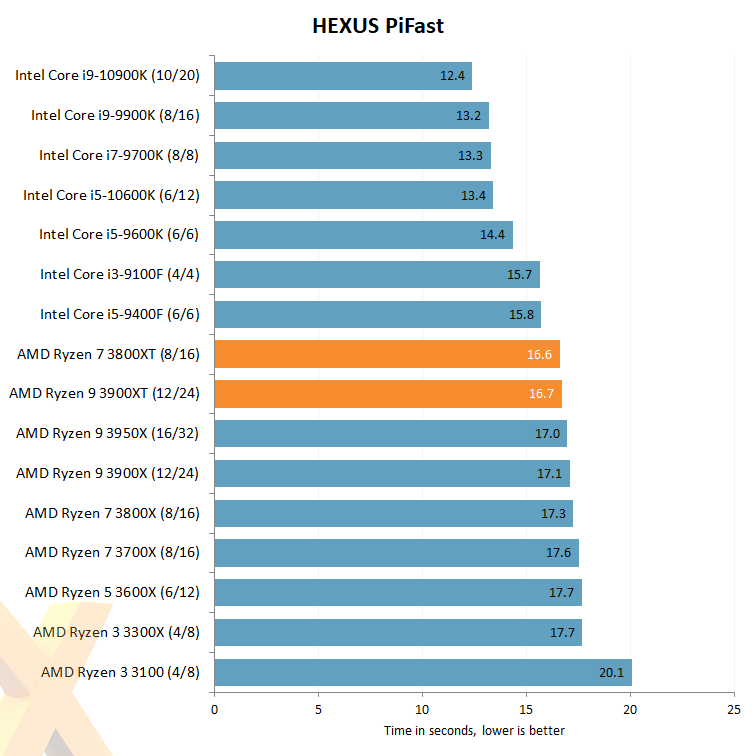CPU Tests

AMD says the largest gains over regular X models will be realised in applications that are moderately threaded. There is truth in this assertion as the completion time for both XT parts is quicker than X. Even so, Intel holds a commanding lead in our 20-year-old benchmark.

Cinebench 1T is a good proxy for how higher sustained frequency helps in low-load tests. We see a 23-point advantage for the 3800XT and a 15-point lead for 3900XT. AMD, on the other hand, reckons the largest increases ought to be for the 12-core chip, going against the grain of what we're seeing.
That doesn't really matter much because both XT chips take the lead away from the Intel Core i9-10900K.

One would expect there to be less of a difference when all cores are running at full chat, primarily because the chips are being hamstrung by strict PPT limits. We still observe gains for both processors - more so for the 3800XT - and every little counts.

The same is true in the longer Blender test. 3800XT fares better again because it is able to maintain an all-core 4,241MHz frequency at its 120W PPT. The supplied 3900XT, meanwhile, run at an average 4,051MHz at its 142W PPT, which is much closer to how the regular 3900X operates.
Put simply, our 3800XT's VF curve is more amenable than the 3900XT.


